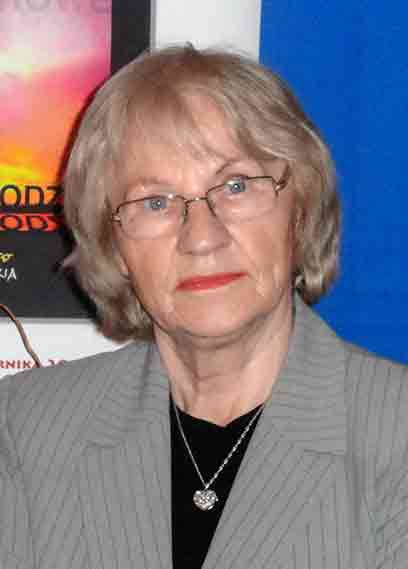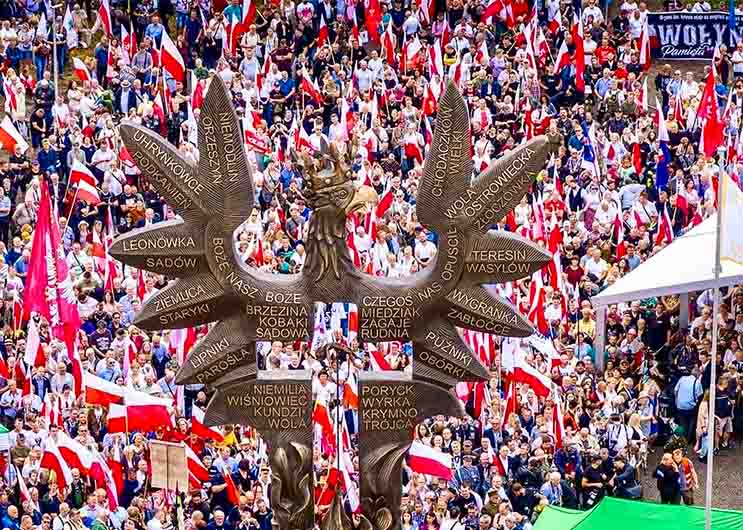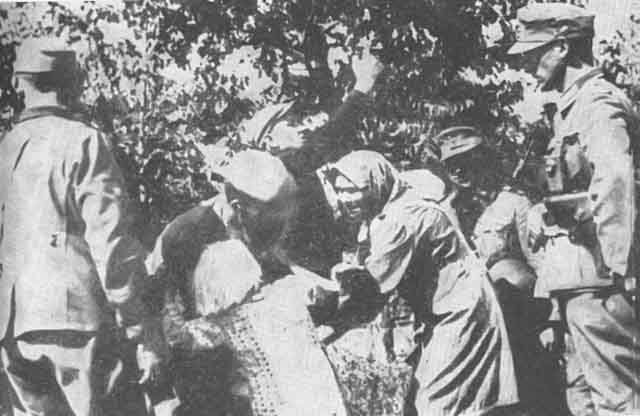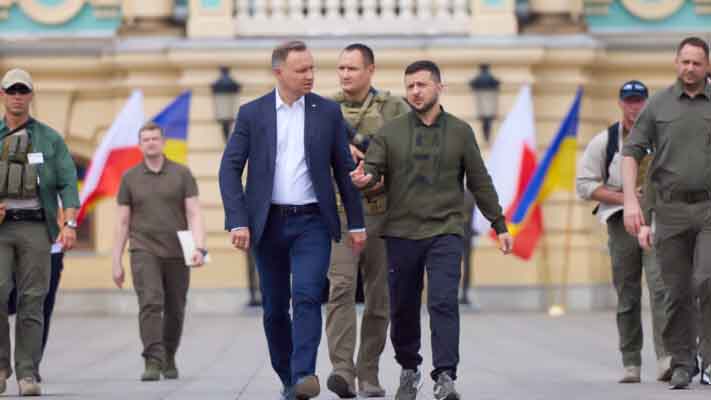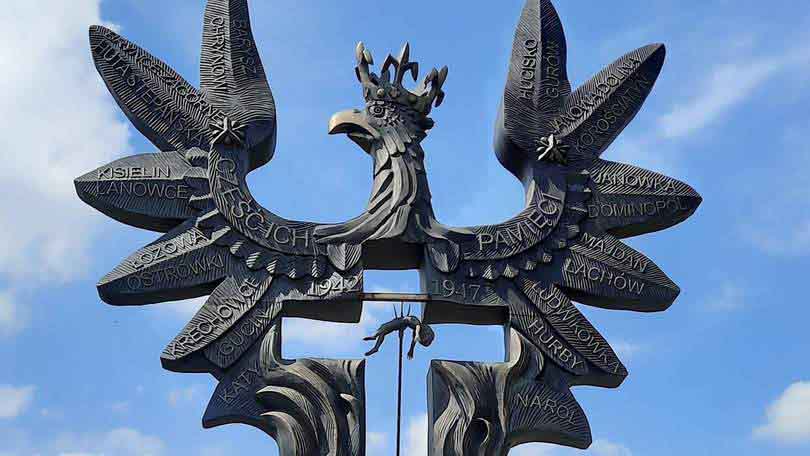Some history
It is difficult to find Huta Pieniacka on a map today, there are no local signposts leading to it, and in Wikipedia, we can read: "a village in Ukraine, which does not exist today."
According to Austrian documents, the village of Huta Pieniacka was founded in the last decade of the 19th century. The only glassworks in the Pieniaki commune, Brody poviat operated there. The lands that cover the Pieniaki commune changed owners, but they were always inherited by Polish families, marked by the Polish economy and culture: the Bielski, Miączyński, Dzieduszycki, Cieński families. Artists created in these lands. Artur Grottger painted his paintings here.
Before World War II, Huta Pieniacka was a large, picturesque village situated on several hills, surrounded by a beautiful beech forest, inhabited mainly by Poles. It had 172 farms, and the number of its inhabitants in 1939 was estimated at about 1,000. The economy and culture developed here. Neighborly relations with Ukrainians were good. Poles, Ukrainians and Jews lived next to one another, next door. They prayed in their temples, churches and synagogues. They visited each other and spent church holidays and family celebrations together. These relations began to deteriorate after the outbreak of World War II, and especially from 1942.
Ukrainian Nationalism
Ukrainian nationalism (Ukrainian national movement) has its source in the works of Ukrainian writers such as: Taras Shevchenko, Ivan Franko, Mykola Koastomarov, and Mykhail Krushevsky, who aroused the sense of separateness of the Ukrainian people and argued for the right of Ruthenians (Ukrainians) to have their own state.
The first to formulate the slogan "Ukraine for Ukrainians" was Mykola Mikhnovsky. During the fighting of World War I, Ukrainians tried to create their own state. They had several ideas on how to get there. They tried to go together with the Poles against the Bolsheviks, but also to create a republic modeled on the Soviet republics. As a result of failed plans, the lands we now call Ukraine were divided. Some of them were annexed to Poland as belonging to it before the partitions, and the rest were formed into the Ukrainian Soviet Republic.
The development of the Ukrainian nationalist movement intensified after the lost war with Poland in 1918-1919. Dissatisfied officers emigrated to Western Europe and established a Ukrainian terrorist organization (Ukrainian Military Organization, Українська Військова Організація, Ukraińska Organizacja Wojskowa, UWO). Activists of this organization were anti-Polish and organized sabotage and terrorist actions (e.g. the murder of Minister Bronisław Pieracki). UWO was established in 1920, and in 1929, at the congress in Vienna, it became part of the Organization of Ukrainian Nationalists (OUN, Організація українських націоналістів). The aim of the newly created organization was to fight for the creation of a Ukrainian state.
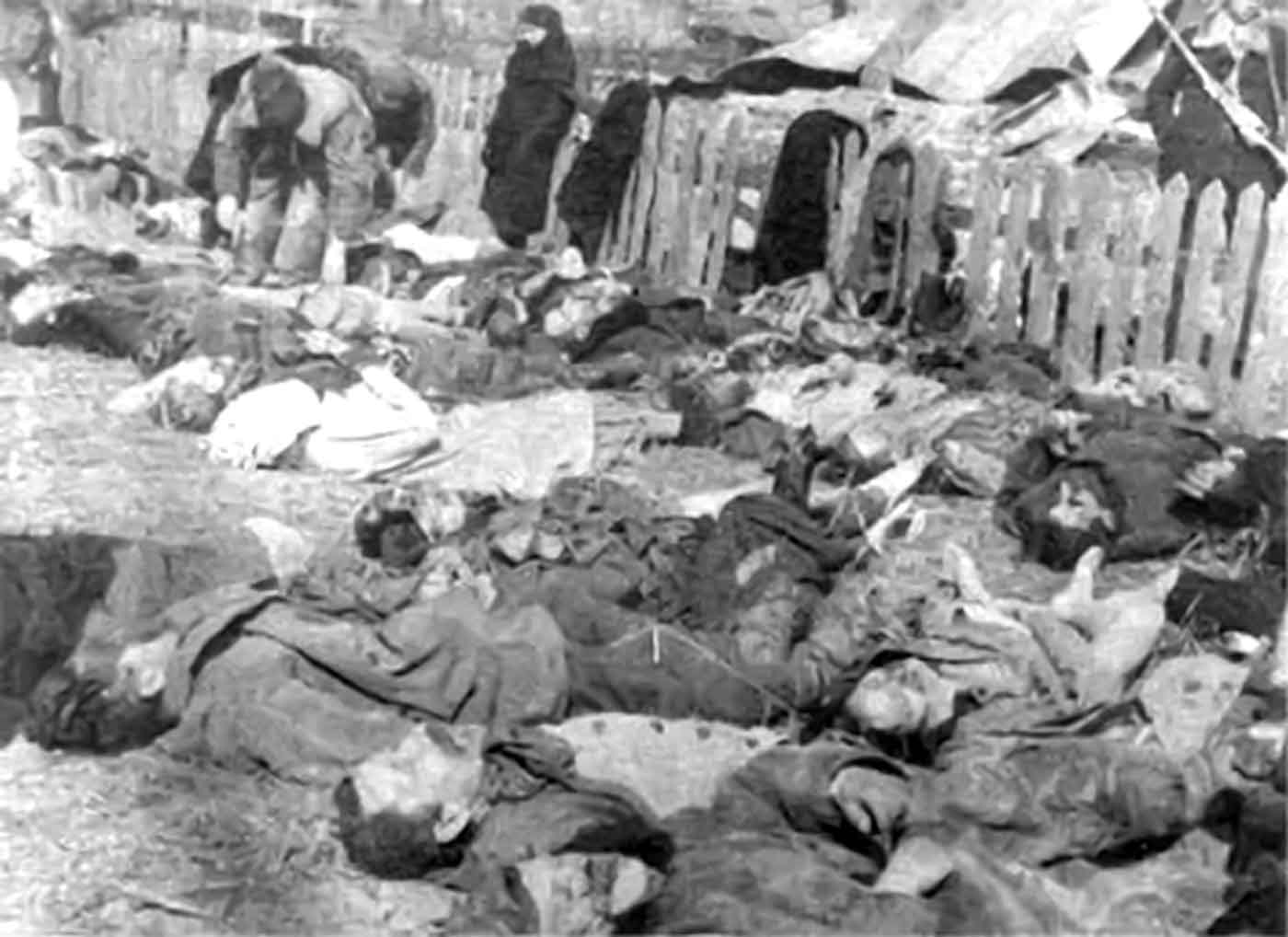
Polish victims of a massacre committed by the Ukrainian Insurgent Army in the village of Lipniki, Wołyń (Volhynia), 1943 (Source: Wikipedia)
The OUN and its armed army UPA (Ukraińska Powstańcza Armia, Ukrainian Insurgent Army, Українська повстанська армія) sought to completely remove the Polish element and other non-Ukrainian nationalities, such as Czechs, from the area that the nationalists considered exclusively Ukrainian. World War II and the German occupation of Ukrainian lands favored their activities. They had a philosophy similar to the Germans (nationalism) and approved of German-fascist methods of operation. They openly cooperated with the occupier by creating Ukrainian SS units. Encouraged by the German extermination of Jews, in August 1943, the OUN-UPA leaders decided to take extermination actions against the Polish population in Eastern Lesser Poland, which intensified at the end of December. Ethnic cleansing began in Volhynia, where in the summer of 1943 there was a wave of criminal attacks on Polish villages and properties. Their defenseless inhabitants were murdered with exceptional cruelty, regardless of age and gender, their property was looted and their farms burned.
The Death of Huta Pieniacka
At the beginning of 1944, there were about a thousand people in Huta Pieniacka. Survivors and refugees from Volhynia and neighboring towns sought shelter here. Based on a local unit of the Home Army, the inhabitants, formed a self-defense unit of approximately 40 people, commanded by Kazimierz Wojciechowski, codename "Satyr". At the same time, at the beginning of January 1944, a unit of Soviet partisans was quartered in Huta Pieniacka. The Soviets left Huta Pieniacka on February 22. A day later, on February 23, near the village there was a firefight between members of the self-defense and Home Army and a police patrol composed of Ukrainians serving in the 4th Police Regiment of the SS Division "Galizien". As a result of the skirmish, 2 Ukrainian policemen were killed and eight were injured.

Huta Pieniacka on the map of Poland before 1939 (Source: Wikipedia)
In retaliation, early in the morning of February 28, Huta Pieniacka was surrounded by a unit of approximately 500-600 Ukrainian SS policemen. The group's commander was a German officer, and the group was supported by a UPA unit and local Ukrainian residents. The village was shelled, and then Ukrainian SS and UPA men entered it from four sides. They started by searching and robbing buildings in search of weapons and wounded Soviet partisans. Poles were brutally interrogated, in trying to obtain information about Soviet partisans. The self-defense commander was doused with flammable liquid and set on fire. Wounded hidden partisans and hiding Jews were brutally killed. Then the criminals gathered the people in the church and school located in the center of the village. In the afternoon, they divided the gathered people into groups of several dozen people and took them in convoys to wooden barns and farm buildings in the village. Then the buildings were closed, machine-gunned and set on fire. Those who resisted or tried to escape were shot. All buildings were burned except the school and the church where the detainees were held. The actions ended around five in the afternoon. The bodies of 868 victims were burned in the blaze.
Only a few (about 160 people) escaped death — those, who stayed in the church and school, in hiding places until the end, or managed to escape earlier. The village of Huta Pieniacka ceased to exist.
The Dispute over the Historical Truth
Until the 1990s, crimes in Poland's eastern borderlands were passed over in silence. They were not talked about in history classes, and at home — only in whispers.
The investigation into the crime in Huta Pieniacka was initiated in 1994. It is currently being conducted by the Branch Commission for the Office of the Prosecution of Crimes against the Polish Nation in Kraków (file "S 50/03/Zn regarding the murder of the inhabitants of Huta Pieniacka by members of the 14th SS Galizien Division"). The events in question were classified as war crimes and crimes against humanity. 144 witnesses were interviewed and research was carried out in Polish and German archives. The analysis of the evidence obtained indicates that the perpetrators of the crime were soldiers of the 4th Galician SS Volunteer Regiment from the then SS Freiwilligen Division "Galizien".
Some Ukrainian researchers deny the Ukrainian identity of the perpetrators of the crime, claiming that the battalion of the 4th Police Regiment only took over the village, and then an unknown subunit of the German police entered there and pacified it. Others argue that the village burned down as a result of the fight between the SS Kampfgruppe "Beyersdorf" (anti-partisan unit) and the Polish self-defense, that civilian casualties were accidental, and that the village was burned for helping Soviet partisans. These authors do not take into account Polish, Jewish, Soviet and Ukrainian sources that confirm the participation of Ukrainians in the massacre.
Commemorations
After the war, the Soviet authorities commemorated the victims of the murder by erecting a monument with a red star and a plaque with an inscription at the site of the crime, identifying German occupiers and Ukrainian nationalists as the perpetrators, but omitted the nationality of the murdered. The plate and star disappeared from the boulder in the 1990s after Ukraine gained independence.
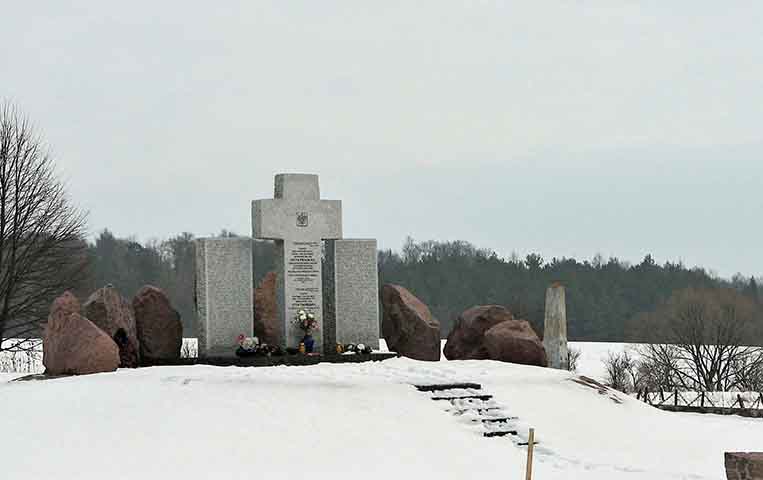
A monument dedicated to the memory of Poles murdered by the 5th SS police regiment and Ukrainian SS Galizien troops in Huta Pieniacka on February 28, 1944.
In 1989, relatives of the victims erected a wooden cross in Huta Pieniacka, and in 2005, thanks to the efforts of the Council for the Protection of Memory of Struggle and Martyrdom, a monument in the form of a cross and two stone tablets with the names of the victims was erected. For two years, the Ukrainian side blocked placing the date of the crime on the monument. On the night of January 8-9, 2017, the monument was destroyed with the use of an explosive, the cross was smashed, one of the stelae with the names of the victims was painted in the colors of Ukraine, the other — in the colors of the UPA, and the runic letters "SS" were also painted on it. In February, the monument was reconstructed thanks to the efforts of local authorities.
Despite 80 years that have passed since that crime, which is now difficult for us to imagine, certain sections of Ukrainian society present themselves not as perpetrators, but as victims, explaining that it was an old Polish-Ukrainian conflict. All documents qualify this crime as genocide and emphasize the unimaginable scale of its cruelty. The process of Polish-Ukrainian reconciliation is progressing slowly and reluctantly. It is hampered by the Ukrainian authorities and is not sufficiently supported by the Polish authorities. The proposed provision of the Ministry of National Education in the history core curriculum is of particular concern. It is proposed to replace the entry "Volhynia massacre" with "Polish-Ukrainian conflict".
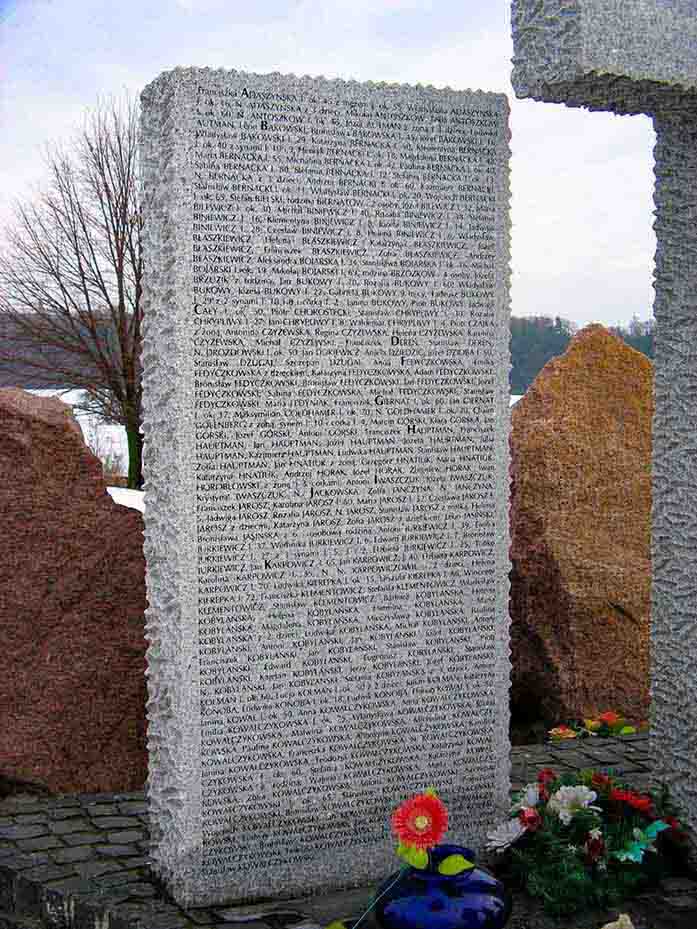
One of the boards with the names of Poles murdered in Huta Pieniacka. (Source: Wikipedia)
Since 2008, "in order to commemorate the crime of genocide committed by Ukrainian nationalists", the Huta Pieniacka Association, bringing together survivors, relatives of victims and sympathizers, has been operating. Let us hope that it will not stop trying to clarify the historical truth and restore respect and lasting memory to the murdered people in the societies of both nations, because "the victims are not calling for revenge, but for remembrance."
Translation from Polish by Andrew Woźniewicz.



